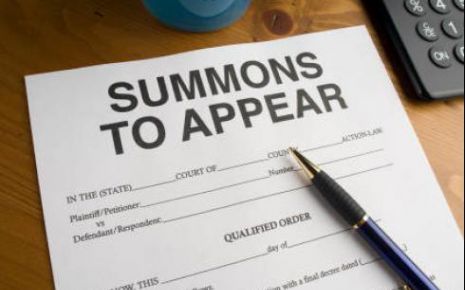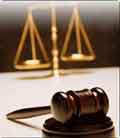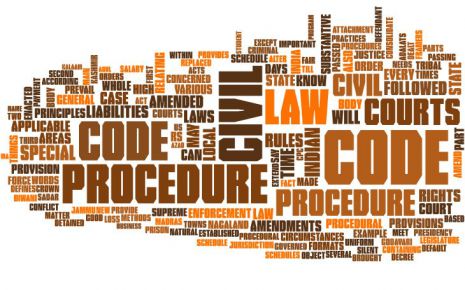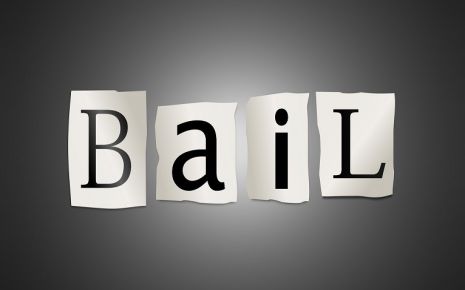Tracing the Killer from Gunshot Wound
These wounds are identifiable by their entrance and exit wounds, with entrance wounds often displaying a circular or oval-shaped defect in the skin surrounded by abrasions or contusions, while exit wounds are larger and more irregular in shape, causing tearing or avulsion of the surrounding tissues due to the bullet's outward force.
The characteristics of gunshot wounds are crucial in forensic investigations, providing evidence to determine the firearm type, shot direction and angle, and distance from which the shot was fired.
Gunshot wounds can also cause internal damage to organs, blood vessels, bones, and other tissues, resulting in various symptoms such as bleeding, pain, and loss of function.
Analyzing these wounds, along with other forensic evidence like ballistics, crime scene reconstruction, and witness statements, is essential in identifying and bringing perpetrators to justice by reconstructing the events leading up to the shooting.
Conducting a thorough forensic investigation to track down a killer based on the victim's gunshot wound requires careful consideration of various factors and pieces of evidence. Here's a breakdown of the process:
- Scrutinizing Wound Characteristics: Forensic specialists closely examine the gunshot wounds� attributes, including size, shape, and location on the victim's body. They evaluate whether the wound aligns with the type of weapon used, bullet caliber, and firing distance.
- Assessing Stippling and Tattooing: The presence of stippling (also known as powder tattooing) around the entry wound can provide crucial information about the shooting's proximity. Stippling occurs when ignited gunpowder particles land on the skin upon firing a gun from close range.
- Analyzing Trajectory: Investigators analyze the bullet's trajectory through the victim's body to determine the shot's direction and angle. This entails studying the entry and exit wounds and any internal damage or injuries caused by the bullet's path. Trajectory analysis helps reconstruct the shooter's position concerning the victim during the shooting.
- Reconstructing the Crime Scene: Forensic experts recreate the crime scene to gain insight into the shooting's circumstances. They scrutinize physical evidence like bullet casings, blood spatter patterns, and other ballistic evidence to piece together the events leading up to the shooting, as well as the movements of the victim and perpetrator.
- Identifying the Firearm: If bullets or bullet fragments are recovered from the victim's body or the crime scene, forensic firearms examiners can analyze them to determine the type of gun used in the shooting. Comparing ballistic characteristics like rifling marks and striations can help match recovered bullets to a specific firearm.
- By combining the results of forensic analysis of the gunshot wound with other evidence, such as ballistics, crime scene reconstruction, and witness testimony, investigators are able to piece together a comprehensive understanding of the shooting incident and successfully identify the individual responsible for the victim's death.
- Weapon Identification: The analysis of gunshot wounds can provide crucial details about the firearm used, including its caliber, gauge, and potentially even the make and model. This information can assist investigators in tracing the weapon used in the crime and linking it to suspects or previous criminal activities.
- Witness Testimony and Suspect Witness: During an investigation, investigators will conduct interviews with witnesses and potential suspects in order to obtain crucial information regarding the shooting. These interviews aim to uncover the identity of the perpetrator as well as their potential motive. The gathered witness testimony and suspect interviews can provide valuable leads and confirm the findings of forensic evidence that has been collected during the investigation.
- Analyzing CCTV Footage: By examining the CCTV footage of the scene of crime and surrounding area, the investigating officer may trace out the perpetrators of the crime.
- CDR Analysis: The process of CDR (Call Detail Record) analysis involves extracting valuable insights from electronic records that capture the specifics of calls made and received on a telecommunications network. These records contain information such as caller and recipient numbers, call duration, timestamps, and call locations. Through the analysis of these records, organizations can gain valuable insights into communication patterns, network usage, and user behavior. CDR analysis has a wide range of applications, including aiding law enforcement in investigations by tracking suspects' and victim�s movements and establishing connections between individuals, assisting telecommunications in monitoring network performance and optimizing usage, and supporting fraud detection by identifying and preventing fraudulent activities such as phone scams or identity theft.
- Call Dump Analysis: The process of conducting a dump analysis call requires a comprehensive review and understanding of call detail records (CDRs) in order to extract valuable information related to telecommunications usage. By carefully examining data such as caller and recipient numbers, call lengths, timestamps, and other metadata, analysts can uncover patterns, irregularities, and shifts within the network. This aids in improving network performance, identifying fraudulent behavior, assisting law enforcement inquiries, and ensuring precise billing and revenue protection.
- Tracking Activities of Known Criminals: Tracking the activities of known criminals during the time of an incident can be instrumental in tracing suspects in a murder case. By analyzing call records, surveillance footage, and other digital traces, investigators can establish potential links between the individuals' movements and the crime scene. This process not only helps narrow down the pool of suspects but also provides crucial evidence to build a case, establish motives, and reconstruct timelines, ultimately aiding law enforcement in apprehending and prosecuting those responsible for the crime.
- Ballistics Analysis: Along with recovered bullets, casings, and other ballistic evidence, examining gunshot wounds can help forensic experts reconstruct the trajectory of bullets, determine the distance from which the shots were fired, and identify the number of shots fired. This analysis can establish the sequence of events during the shooting and corroborate witness testimonies or suspect statements.
- Cause and Manner of Death: Gunshot wounds are a common cause of death in homicides, suicides, and accidents. It is crucial to determine the cause and manner of death in any death investigation. By examining gunshot wounds in conjunction with autopsy findings and other forensic evidence, medical examiners or forensic pathologists can determine whether the death was due to homicide, suicide, accident, or natural causes.
- Crime Scene Reconstruction: The analysis of gunshot wounds and blood spatter patterns can assist in reconstructing the events that occurred at the crime scene. By examining the location and characteristics of gunshot wounds on victims, surfaces, or objects, investigators can piece together the movements of individuals, the position of the shooter, and other relevant details. This reconstruction can provide valuable insights into the case.
- Identifying Suspects: By studying the characteristics of gunshot wounds, such as entry and exit wounds, investigators can gain valuable insights into the positions of the shooter and the victim at the time of the shooting. This information, combined with witness statements and forensic analysis, can aid in the identification of potential suspects or support the testimonies of witnesses or suspects.
- Legal Proceedings: Evidence related to gunshot wounds is often presented during criminal trials. Testimonies from experts in fields such as forensic pathology and firearms examination can assist jurors in understanding the significance of gunshot wounds, ultimately impacting the outcome of the case for either the prosecution or defense.
- Overall, the examination and analysis of gunshot wounds play a crucial role in police investigations of violent crimes involving firearms. By providing crucial information for identifying suspects, reconstructing events, and ensuring justice in criminal proceedings, this process is essential in bringing closure to these cases.
- Signs and Symptoms of Gunshot Wounds: Gunshot wounds can manifest in a variety of ways, influenced by factors such as the wound's location and severity, the type of firearm used, and potential complications. Here are some typical signs and symptoms associated with gunshot wounds:
- Visible Wounds: Gunshot wounds can cause visible harm to the skin and surrounding tissues. This may involve entry wounds, which appear as small, circular or oval-shaped openings in the skin with accompanying abrasions or bruises, and exit wounds, which are often larger and have irregular shapes.
- Bleeding: Gunshot wounds often result in bleeding, which can range from minor to severe depending on the wound's location and extent. External bleeding may be evident at the wound site, while internal bleeding may not be immediately apparent but can lead to symptoms like weakness, dizziness, and signs of shock.
- Pain: Gunshot wounds are frequently accompanied by pain at the site of the
wound, which can vary in intensity depending on factors like the depth and
extent of tissue damage. The sensation of pain can intensify when the affected
area is moved or placed under pressure.
- Shock: Severe gunshot wounds can trigger shock, a life-threatening condition marked by inadequate blood flow to vital organs. Indications of shock may include a rapid heart rate, shallow breathing, pale or clammy skin, confusion, and loss of consciousness.
- Difficulty Breathing: Gunshot wounds to the chest or abdomen can impede breathing due to harm to the lungs, airways, or diaphragm. Symptoms may include shortness of breath, chest pain, coughing up blood, and rapid or shallow breathing.
- Impaired Function: Gunshot wounds can impair the function of affected body parts or organs, depending on the wound's location and severity. For instance, wounds to the extremities may result in loss of sensation, weakness, or inability to move the affected limb.
It is crucial to understand that the signs and symptoms of gunshot wounds may
differ significantly based on personal circumstances, and it is imperative to
seek prompt medical assistance for any potential gunshot harm in order to
evaluate and treat the severity of the wound and avoid further complications.
Written By: Md.Imran Wahab, IPS, IGP, Provisioning, West Bengal
Email: [email protected], Ph no: 9836576565
Also Read:
Law Article in India
Legal Question & Answers
Lawyers in India - Search By City
LawArticles
How To File For Mutual Divorce In Delhi

How To File For Mutual Divorce In Delhi Mutual Consent Divorce is the Simplest Way to Obtain a D...
Increased Age For Girls Marriage

It is hoped that the Prohibition of Child Marriage (Amendment) Bill, 2021, which intends to inc...
Facade of Social Media

One may very easily get absorbed in the lives of others as one scrolls through a Facebook news ...
Section 482 CrPc - Quashing Of FIR: Guid...

The Inherent power under Section 482 in The Code Of Criminal Procedure, 1973 (37th Chapter of t...
The Uniform Civil Code (UCC) in India: A...

The Uniform Civil Code (UCC) is a concept that proposes the unification of personal laws across...
Role Of Artificial Intelligence In Legal...

Artificial intelligence (AI) is revolutionizing various sectors of the economy, and the legal i...








Please Drop Your Comments